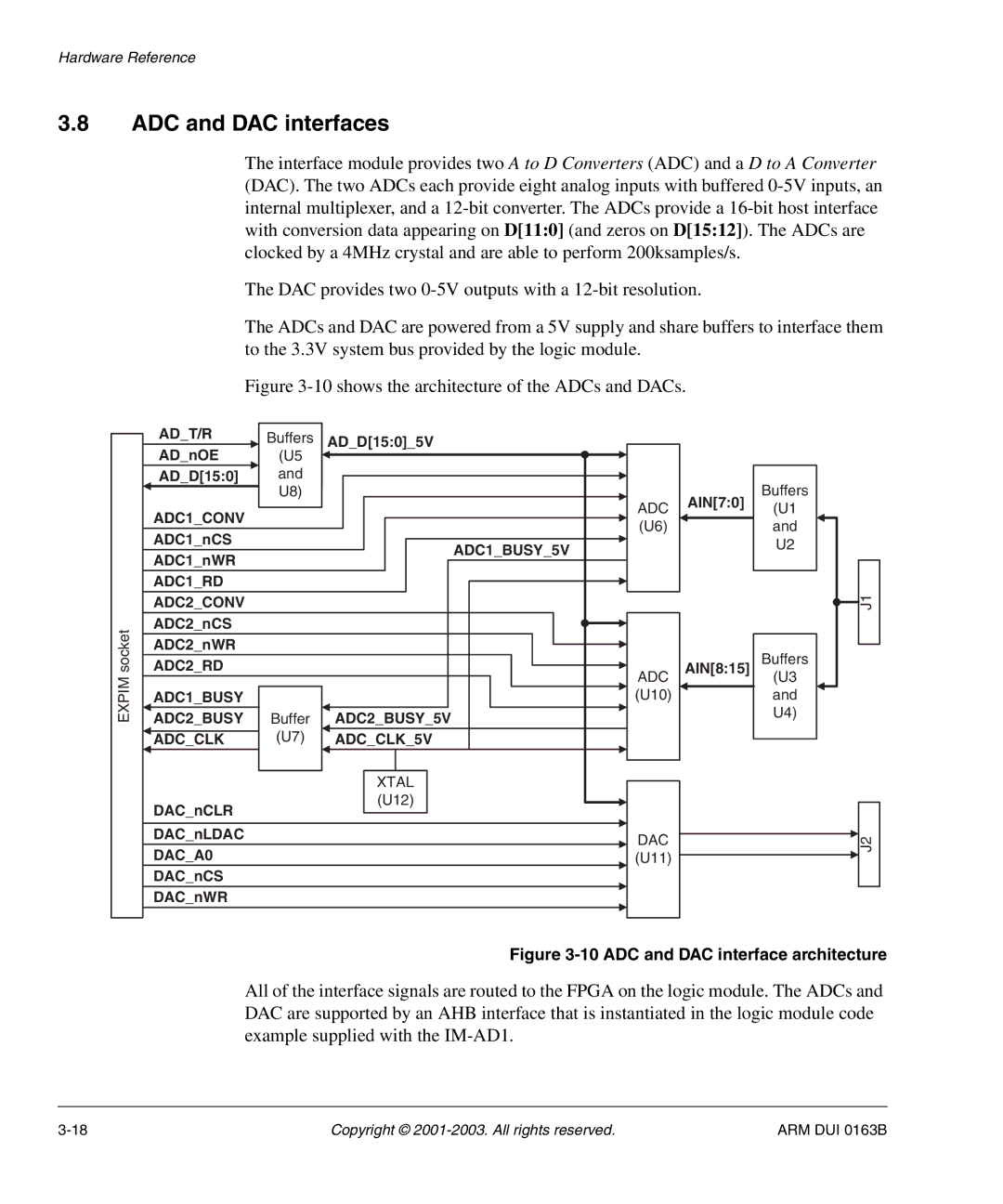
Hardware Reference
3.8ADC and DAC interfaces
The interface module provides two A to D Converters (ADC) and a D to A Converter (DAC). The two ADCs each provide eight analog inputs with buffered
The DAC provides two
The ADCs and DAC are powered from a 5V supply and share buffers to interface them to the 3.3V system bus provided by the logic module.
Figure 3-10 shows the architecture of the ADCs and DACs.
| AD_T/R | Buffers | AD_D[15:0]_5V |
| AD_nOE | (U5U13 |
|
| AD_D[15:0] | and |
|
|
| U8) | ADC |
| ADC1_CONV |
| |
|
| (U6) | |
| ADC1_nCS |
| |
|
| ADC1_BUSY_5V | |
| ADC1_nWR |
| |
|
|
| |
| ADC1_RD |
|
|
| ADC2_CONV |
|
|
socket | ADC2_nCS |
|
|
ADC2_nWR |
|
| |
ADC2_RD |
| ADC | |
EXPIM |
|
| |
ADC1_BUSY |
| (U10) | |
ADC2_BUSY | Buffer | ADC2_BUSY_5V | |
| ADC_CLK | (U7) | ADC_CLK_5V |
|
|
| XTAL |
|
|
| (U12) |
DAC_nCLR |
|
|
|
|
|
| |
DAC_nLDAC |
|
| DAC |
DAC_A0 |
|
| (U11) |
DAC_nCS |
|
|
|
DAC_nWR |
|
|
|
AIN[7:0]
AIN[8:15]
Buffers
(U1 and U2
Buffers
(U3 and U4)
J1
J2
Figure 3-10 ADC and DAC interface architecture
All of the interface signals are routed to the FPGA on the logic module. The ADCs and DAC are supported by an AHB interface that is instantiated in the logic module code example supplied with the
Copyright © | ARM DUI 0163B |
